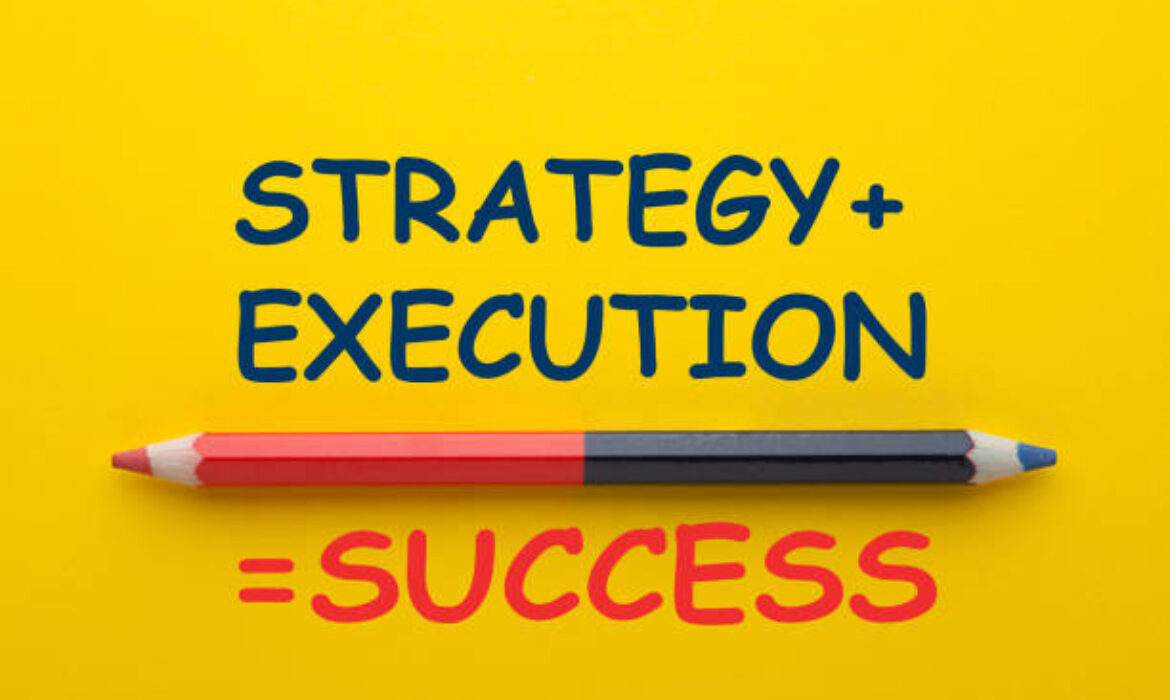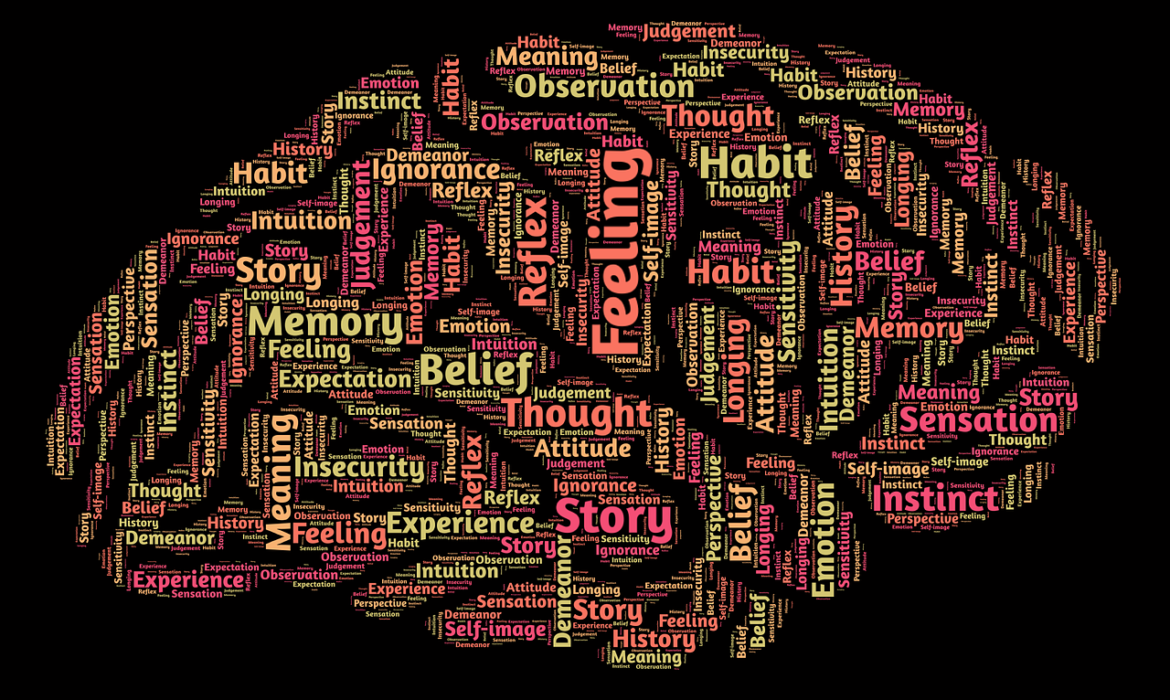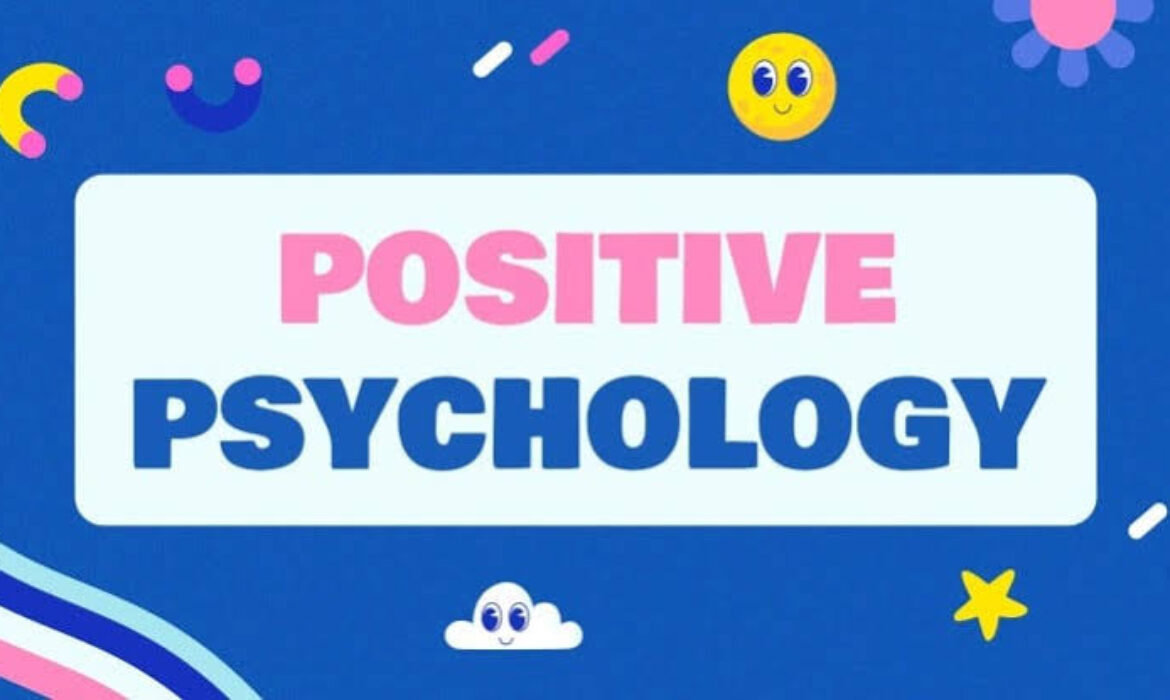081-4797-7173
Unlocking the Potential of Personalization: Delivering 1:1 Experience at Scale

Introduction
In this present digital era, personalization which is oftentimes used interchangeably as customization stands as the fundamental element of effective marketing tactics. From tailored product recommendations to customized email campaigns, consumers expect brands to understand their preferences and deliver relevant experiences. However, achieving true 1:1 personalization at scale has long been a challenge for marketers. Traditional approaches often fall short, relying on broad segmentation or manual interventions that limit the ability to engage each customer uniquely.
Fortunately, advancements in technology, data analytics, and artificial intelliunlockgence are revolutionizing the way brands connect with their audience. By harnessing the power of these tools, businesses can the full potential of personalization and deliver individualized experiences at scale.
The strategies include:
Leveraging Data Driven Insights:
One of the key strategies for achieving this is leveraging data-driven insights. By collecting and analyzing vast amounts of customer data, including browsing history, purchase behavior, and demographic information, brands can gain a deep understanding of each individual’s preferences and interests. This rich data allows marketers to segment their audience more effectively and tailor their messaging accordingly.
However, segmentation alone is not enough to deliver true 1:1 personalization. To truly connect with customers on a one-to-one level, brands must go beyond basic demographics and surface-level preferences. This is where advanced AI and machine learning algorithms come into play.
Advanced Algorithm:
By deploying sophisticated algorithms, marketers can uncover hidden patterns and correlations within their data, allowing them to predict future behaviors and preferences with remarkable accuracy. This predictive analytics enables brands to anticipate customer needs and deliver hyper-personalized experiences in real-time.
Automations:
Automation is another effective strategy brands can employ to unlock the full potential of personalization and deliver individualized experiences at scale. It allows businesses to deliver highly relevant and timely messages to their audience. Furthermore, automation plays a crucial role in scaling personalized marketing efforts. By automating routine tasks such as email segmentation, content customization, and campaign optimization, brands can streamline their workflows and free up valuable time and resources to focus on more strategic initiatives.

Omni-channel Marketing:
Another essential aspect of delivering personalized experiences at scale is omnichannel marketing. In today’s multi-device, multi-channel world, consumers expect consistency and continuity across all touchpoints. By integrating data and insights from various channels – including websites, social media, mobile apps, and offline interactions – brands can create seamless omnichannel experiences that resonate with customers wherever they are.
Ever imagined or noticed how some messages are randomly sent or adverts which occasionally pop up on our screen seem like they slightly correlate with an intended tasks, activities or what we watched through our phone or tablet, and they sort of have amazing similarities or connections, okay customization at play here. Moreover, personalization extends beyond just marketing messages. Brands can also personalize the entire customer journey, from browsing and shopping to post-purchase support and loyalty programs. By tailoring every interaction based on individual preferences and behaviors, brands can foster deeper connections with customers and drive long-term loyalty and advocacy.
Conclusion
In conclusion, unlocking the full potential of personalization requires a combination of data, technology, and strategy. By leveraging advanced analytics, AI-driven insights, automation, and omnichannel marketing, brands can deliver truly individualized experiences at scale. In doing so, they can not only meet but exceed customer expectations, driving engagement, loyalty, and ultimately, business growth in today’s competitive world.
KEY TAKEAWAYS FROM TOP MARKETING CONFERENCES IN 2024
What Are Marketing Conferences For?
Marketing conferences are big gatherings where people in the marketing industry meet to learn new things. They can happen online or in person and include webinars. These events are like exciting gateways where marketers share ideas and trends. You will find talks, workshops, and chances to meet others. The goal is to learn about the latest marketing strategies and tech, and to make connections in the industry.
Examples Of Some of Top Marketing Conferences in 2024
Listed Below are some top marketing conferences in 2024 :
- B2B Marketing Expo (https://www.b2bmarketingexpo.us/)
- B2B Marketing Exchange (https://b2bmarketing.exchange/)
- Gartner Data & Analytics Summit 2024 (https://www.gartner.com/en/conferences/na/data-analytics-us)
- Martechopia (https://events.b2bmarketing.net/martechopia2023)
- Sales 3.0 Conference (https://www.sales30conf.com/)
What Are The Expected Things To Get From Top Marketing Conferences
- Networking : Networking at marketing conferences can be crucial for building connections, discovering opportunities, and staying updated with industry trends. A simple benefit of networking is that it can help you meet new people who can provide valuable advice, support, or opportunities in your career or business.
- Participation in informative one-to-one interactive activities (infotainment) : This refers to engaging in activities that blend information and entertainment to educate and engage attendees. The benefit of infotainment is that it can make learning more enjoyable and memorable, leading to increased engagement and retention of information.
- Getting to see live Educational Workshops (Edutainment) : This means attending workshops that combine education with entertainment, providing an engaging and enjoyable learning experience. The benefits include enhanced learning through interactive sessions, increased engagement, and a more memorable experience for attendees.
The listed set of expectations to get from marketing conferences, shows how much marketing conferences are important and the benefits attached to each expectation.
TAKEAWAYS FROM TOP MARKETING CONFERENCES.
Key takeaways from top marketing conferences can vary depending on the focus and theme of each event. However, some common themes and insights often include:
- Branding and Storytelling: The importance of branding and storytelling in marketing, and how to create compelling narratives for brands. This is one very important takeaway, which helps upgrade your business or entrepreneur.
- Emerging Trends: Getting updates on the latest trends and innovations in marketing, such as influencer marketing, AI, and personalization. And these updates keep you well informed and they make you aware of the newest form of trends in the world.
- Networking Opportunities: The chance to connect with other marketers, industry experts, and potential collaborators. This is like the most important thing most people think of, by trying to get to meet great people and experienced people.
- Digital Marketing Strategies: Tips and strategies for effective digital marketing, including social media, content marketing, and SEO, helps improve your skills and knowledge about marketing at large, with this, you get to have strategic plans set for yourself.
- Industry Case Studies: Real-world examples and case studies from successful marketing campaigns, getting to also meet with inspiring people and organizations, you get to understand what position you have to maintain.
- Inspiration and Motivation: Keynote speakers and sessions designed to inspire and motivate marketers in their work. With the greatest expectation of going to a conference, it’s to see experienced speakers, and hearing them brings the greatest form of inspiration and motivation.
In Conclusion, marketing conferences provide valuable learning, networking, and trend insights. They offer the latest strategies and tools, enhancing skills and driving results. Networking can lead to new partnerships and career opportunities. Overall, these events catalyze growth, innovation, and success in marketing.
Future of E-Commerce: What’s Next for Direct-to-Consumer Brands?
Introduction

E-Commerce is one tremendous benefits of trading that technological advancements and innovations has brought our way. Looking at the rate e-commerce is evolving rapidly,presenting both challenges and exciting opportunities for direct-to-consumer (D2C) brands. It will be of importance to have insights to the several trends that is shaping the future of buying and selling, and understanding this great evolution in the commercial sector. This article will identify these trends making the online space in recent years and the possibility of other trends to come.
First let’s take a look at the direct to consumer brands (D2C), most businesses are channeling to this trading system which seems to produce effective results to a great extend. As consumer behaviors and preferences continue to shift, D2C brands must stay agile and innovative to thrive in this dynamic market.
From the rise of personalized shopping experiences to the increasing importance of sustainability and social responsibility, the future of e-commerce holds transformative potential for brands that can effectively adapt and capitalize on emerging trends.

Here are some key trends to watch out for in 2024 and beyond in the field of e-commerce:
- Customization and Improving Customer Satisfaction: In e-commerce, customization and improving customer experience are essential for success. Tailored communications and simple gestures like personalized emails or discount codes make a significant difference. Merchants should prioritize customization across all channels, including pre and post-purchase experiences. Hiring skilled sales assistants and regularly reviewing and refining the online sales process are crucial steps to meet customer expectations and enhance overall satisfaction. For instance, according to reports 70% of consumers prioritize brands that offer tailored messaging or communications. However, it’s not about complicating matters; often, simple gestures such as personalized emails, unique discount codes, or other individualized touches can make all the difference. Therefore, the next step for online retailers is to prioritize customization across their website, social media platforms, and other communication channels.Key areas to focus on during user testing include your call to action, the length of your checkout process, product page flow, messaging and the information requested on the checkout page. Continuously refining these elements should contribute to enhancing your business’s overall customer experience. These are key trends making D2C more engaging.
- Augmented Reality (AR): In the future of e-commerce, the next wave of direct-to-consumer (D2C) brands may leverage Augmented Reality (AR) technology to enhance the shopping experience. However, one disadvantage often complained about is the inability for customers to physically interact with products before purchasing them. AR can address this by allowing customers to virtually try on clothing, visualize furniture in their homes, or see how products look in different environments, mitigating the need for physical interaction. Actually some brands are taking advantage of this already. To be ahead in this competitive space, you might need to consider this.
- Blockchain Technology: As the future of e-commerce evolves, D2C brands may increasingly adopt blockchain technology to enhance security, transparency, and trust within their supply chains and payment systems. Blockchain can provide immutable records of transactions, ensuring authenticity and preventing fraud. Additionally, it can enable more efficient and transparent tracking of products from manufacturer to consumer, addressing concerns such as counterfeit goods or unethical sourcing practices.
- Climate-Friendly Purchases: In the future of e-commerce, D2C brands may prioritize climate-friendly practices to appeal to environmentally conscious consumers. Considering the growing awareness of climate change and sustainability issues, D2C brands may focus on offering eco-friendly products, reducing carbon emissions in their supply chains, and implementing green packaging solutions. By aligning with consumers’ values and preferences for sustainable shopping, D2C brands can differentiate themselves in the market and attract a loyal customer base.
- Voice-Enabled Shopping Services: The integration of voice technology into online shopping platforms is poised to revolutionize the way consumers interact with ecommerce. Voice-enabled shopping services allow users to search for products, place orders, and track deliveries using voice commands, offering a seamless and hands-free shopping experience.
- Automation Adoption: Embracing automation is becoming increasingly crucial for D2C brands to streamline operations, enhance efficiency, and deliver exceptional customer experiences. Automated processes can range from inventory management and order fulfillment to personalized marketing campaigns, enabling brands to scale effectively while reducing manual workload and errors.
- Shoppable Videos: The integration of shoppable videos, such as influencers showcasing products in real-life scenarios, is becoming a prominent trend in ecommerce. By making products directly purchasable within video content, brands can enhance engagement, drive conversions, and provide a more immersive shopping experience for consumers.
- Opaque Sharing: In the future of e-commerce, opaque sharing, commonly known as dark social media sharing, is a trend to watch out for. This refers to the sharing of content through private channels such as messaging apps, email, or private groups, making it challenging to track and measure. Despite its elusive nature, dark social sharing can significantly impact consumer behavior and influence purchasing decisions, making it essential for D2C brands to understand and leverage effectively.
- Quick Delivery Commerce: Another trend to watch out for is quick delivery commerce, also referred to as Q-commerce. This innovative aspect of e-commerce involves expedited product delivery, often within a short timeframe such as minutes or hours. D2C companies are increasingly adopting Q-commerce strategies to meet the rising consumer demand for fast and convenient delivery options. By offering quick delivery services, D2C brands can enhance customer satisfaction, improve retention rates, and stay competitive in the evolving e-commerce landscape.

However, looking forward to these innovative technologies shaping buying and selling, it is highly recommended for brands seeking to be at a higher competitive level and delivering effectively to adopt these innovations.
D2C brands should consider e-commerce trends in 2024 to stay ahead of the curve and meet evolving consumer demands. Below are the reasons why and how they should implement these trends:
The Why’s of E-commerce Trends to D2C Brands
- E-commerce trends provide valuable insights into shifting consumer behaviors, preferences, and expectations. By staying informed about emerging trends, D2C brands can anticipate market changes, identify new opportunities for growth, and remain competitive in the rapidly evolving digital space.
- By offering expedited shipping services, D2C brands can enhance customer satisfaction, reduce cart abandonment rates, and differentiate themselves from competitors.
Ways to Implement E-commerce Trends
- Conduct Market Research: D2C brands should regularly conduct market research to identify emerging e-commerce trends relevant to their industry and target audience. This includes analyzing consumer behavior, competitor strategies, and industry reports to stay informed about new developments and opportunities.
- Adapt Business Strategies: Once identified, D2C brands should adapt their business strategies to align with emerging e-commerce trends. This may involve updating product offerings, optimizing marketing strategies, or investing in new technologies to meet changing consumer demands and preferences.
- Invest in Technology: To implement e-commerce trends effectively, D2C brands should invest in technology solutions that support their goals and objectives. This may include upgrading e-commerce platforms, implementing data analytics tools, or adopting new technologies such as augmented reality or voice commerce to enhance the shopping experience for customers.
- Foster Innovation: D2C brands should foster a culture of innovation within their organizations to encourage experimentation and creativity. This includes empowering employees to propose and implement new ideas, conducting pilot tests and experiments, and continuously iterating and improving processes based on feedback and insights.
- Prioritize Customer Experience: Regardless of the specific e-commerce trends being implemented, D2C brands should prioritize delivering exceptional customer experiences. This involves understanding and anticipating customer needs, providing personalized interactions and recommendations, and offering seamless and convenient shopping experiences across all touchpoints.
Conclusion
By considering e-commerce trends of effective customization, augmented reality, climate friendly purchase, voice enabled shopping, video shopping, and many others and implementing them effectively, D2C brands can position themselves for success in 2024 and beyond, driving growth, and remaining competitive in the ever-changing digital landscape. So considered following Luemprex Digital Network on all social media platforms to keep you updated on current topics and resources.
MASTERING THE ART OF AUTHENTIC INFLUENCER PARTNERSHIP
Have you ever scrolled through social media and come across a post from your favorite influencer promoting a product? It seems like everyone’s doing it these days, but here’s the thing: not all those partnerships feel genuine. That’s where authentic influencer parnership comes in.
In today’s digital landscape, influencer partnerships have become a cornerstone of marketing strategies for brands aiming to connect with their target audiences authentically. However amidst this, building authenticity is important as it helps to build connections, trust and drive meaningful engagement.
In this blog post, we will discuss the power of authentic influencer marketing and its benefits to your brand.
AUTHENTIC INFLUENCER PARTNERSHIP
Ever heard of influencer partnerships? They’re when brands team up with people who have lots of followers online, called influencers. These influencers can really influence what people buy. Nowadays, these partnerships are super important in marketing.
You might wonder, what’s the big deal about authentic influencer partnerships? Well, authenticity means being real and genuine. In influencer partnerships, it’s about finding people who truly connect with your brand and audience, not just promoting for the sake of it.
Why does authenticity matter so much? Simple. It’s all about trust. When you partner with influencers who genuinely believe in your brand, it builds credibility.
People trust recommendations from real people they relate to, not just ads. Take a look at successful partnerships like fitness influencers promoting workout gear they actually use or beauty gurus sharing honest reviews of skincare products they love.
These are examples of authenticity in action, and they really resonate with audiences.” let’s master some of the following steps in partnering with an authentic influencer;
IDENTIFY THE RIGHT INFLUENCER
Identifying and sorting out the best influencer for the job is critical inorder to gain maximum outcome. It’s crucial to select these influencers with your brand values and target audience In mind.
Look for influencers who not only have large following but interact with their audience meaningfully. While at this, consider the influencers tone, content style, and their overall presence to ensure it’s compatible with your brand.
Consider utilizing these tools to select authentic influencers;
- Influencer marketing platforms.
- Social media monitoring tools like Brandwatch, Mention, or Hootsuite to track mentions of relevant keywords related to your brand or industry across various social media platforms.
- Conduct manual research by browsing through social media platforms, blogs, and other online channels to discover potential influencers who align with your brand values and target audience.
ALIGIN YOUR GOALS AND VALUES
It is important for your influencers goals to be aligned with your brands. Upon identifying the influencer your brand will be working with, clearly define your goals and values to them. Communicate clearly your brands mission and objectives and inturn? Listen to the influencers goals.
It is important to state the mutual benefit from your partnership for both the influencer and your brand. Identify opportunities for the influencer to create authentic content that aligns with their personal brand while also promoting your brand’s message or product.
Let’s look at the TOMS x influencers for “one for one” campaign here. TOMS carefully selected influencers who resonated with its values of social impact and they created magic. Collaborative content included testimonials, behind-the-scenes footage, and social media posts showcasing the influencers’ support for the brand’s cause.
Consider understanding your goals alongside that of your influencers in order to be able to gain authentic influencer partnerships.
CREATE AUTHENTIC CONTENT
In creating authentic content, you should partner with your influencer effectively. Consider the following collaboration technique for creating authentic content with influencers;
- STORYBOARD SESSIONS: one easy way to get authentic content is to brainstorm and develop ideas together. Have open dialogue inorder to ensure that your content aligns. Encourage your influencer to share experiences, and genuine insights that are relevant to your brand. Having an understanding that consumers relate to authentic stories and experiences well.
- CONTENT PLANNING CALENDER: once you’ve determined the ideas to be used together, plan out your content calender incorporating the topics, theme and the posting schedule for every content. This will help your influencer maintain consistency inorder to achieve the brand desired goals.
- CO- CREATION WORKSHOP: after all is said and done, organize a workshop for the influencer and the brand’s creative team. Let’s say you will be needing other hands to co shoot a video alongside your influencer, this becomes your safe space to discuss with every individual that will be involved letting them know the role they will play.
MEASURE IMPACT AND EVALUATE SUCCESS
How do you know the effectiveness of something? By impact and evaluating the rate of it’s success. Let’s look at how you can achieve this;
- ENGAGEMENT METRICS: track the engagement metrics such as likes, comment, shares, save. Higher engagement indicate increased interest towards the brand.
- REACH AND IMPRESSION: to access the overall exposure and visibility of your brands content, analyze the extent to which the content have been seen and shared across the various social Platforms
- CONVERSION RATE: determine the effectiveness of your influencer partnership in driving desired actions, such as website visits, sign-ups, purchases, or downloads. You can do this by looking at the percentage of sales or actions that came directly from the influencer’s promotions.
- BRAND SENTIMENT ANALYSIS: Check how people feel about your brand before and after the influencer campaign. Look for any changes in how they talk about your brand, whether they mention it more positively or negatively. This helps you see if the influencer partnership has made people feel differently about your brand.
CONCLUSION
Influencer partnerships is a great way to connect with your audience and promote your brand. By working with influencers who share your values and resonate with your audience, you will create authentic content that builds trust and engagement.
Influencer collaborations can have a positive impact on your brand and help you reach your marketing goals just remember to always measure the impact of your influencer campaigns using tools like engagement metrics and brand sentiment analysis. This will help you understand what’s working and how to improve future partnerships.
Unlocking the Secrets of Psychosomatic Disorders: Mind Influencing Body

Psychosomatic disorders, also known as psychophysiological disorders, are a fascinating group of conditions that highlight the intricate relationship between the mind and the body. These disorders show the fact that our mental state can have a significant impact on our physical health, and vice versa.
Understanding Psychosomatic Disorders
The word “psychosomatic” means that these disorders arise from psychological causes. Such as stress, anxiety, and depression, as well as somatic (physical) components. Fundamentally, psychosomatic disorders are the result of the significant impact of mental and emotional components on physical health. Stress, trauma, unresolved emotional issues, and other psychological variables can produce a wide range of physical symptoms. These includes, headaches, stomachaches, exhaustion, and muscle discomfort. Chronic stress, for example, might lead to high blood pressure or ulcers, showing how emotional distress can manifest physically.
Such symptoms frequently confuse medical personnel and patients, blurring the difference between psychological discomfort and physical sickness. The mind-body connection plays a vital role in many illnesses, affecting the individual’s experience of illness.
Common Psychosomatic Conditions

Psychosomatic illnesses can present in a variety of ways. These includes, chronic pain syndromes, gastrointestinal problems, cardiovascular concerns, respiratory diseases, and dermatological manifestations. The fact that these illnesses are so different shows how complicated the root cause is.
Diagnosis
Diagnosing psychosomatic conditions might be particularly difficult. Unlike purely physical conditions which can frequently be easily connected to a cause. Psychosomatic disorders involve symptoms that do not have a clear medical explanation. This uncertainty can make therapy difficult, necessitating a comprehensive approach that treats both the mental and physical elements of the problem. As such, diagnosing psychosomatic disorders requires an in-depth strategy. That extends beyond typical medical exams involving both medical and psychological evaluations. This comprehensive approach needs coordination among healthcare specialists. These includes, physicians, psychologists, and psychiatrists, to provide correct diagnoses and customized therapy approaches.
To understand the complex relationship between mental and physical symptoms, medical experts use different types of diagnostic methods. Such as diagnostic criteria, comprehensive interviews, and, in some cases, psychological assessments.
Only a complete comprehension of the patient’s psychological state allows for the improvement of an effective treatment plan.
They must understand the intricate connection of psychological pressures, emotional well-being, and physical symptoms experienced by the individual.
Treatment Approaches
The goal of treatment for psychosomatic disorders is to treat the ailment on both a psychological and physical level. To reduce symptoms and encourage complete recovery, specialists may prescribe medication, cognitive-behavioral therapy (CBT), and relaxation methods. Also, stress management strategies, lifestyle changes, and occasionally medication may be used.
Additionally, educating patients is essential to giving them the confidence to take an active part in their healing. Patients who grasp the mind-body link can better understand the causes of their symptoms and develop appropriate symptom management strategies.
Family and friend support is crucial in managing psychosomatic disorders in addition to professional assistance. Building a good support network promotes resilience and aids in dealing with the challenges presented by these situations.
Importance of Holistic Care
Adopting a holistic approach to care is critical for successfully addressing psychosomatic diseases. Healthcare professionals can give complete support that addresses the complicated nature of mental and physical health disorders. This can be done by acknowledging the mutual dependence of various conditions. This comprehensive structure emphasizes the importance of caring for the individual’s mental and emotional well-being in addition to managing physical symptoms.
Preventive Measures
Preventive actions are necessary for lowering the risk of psychosomatic diseases. Stress management practices, regular exercise, and a healthy lifestyle can help build resilience to the negative consequences of psychological distress. Early intervention is critical because it prevents the progression of symptoms and promotes long-term health.
In conclusion, psychosomatic illnesses highlight the complex relationship between mental and physical health. By understanding and addressing the underlying psychological reasons that contribute to physical symptoms. Healthcare providers can give more effective therapy and support to those suffering from these complicated disorders. Adopting a holistic approach to healthcare is critical in providing comprehensive care to persons affected by psychosomatic diseases.
Social Media For Professionals : Networking, Branding and Job Seeking

Social media for professionals comprises platforms where users can connect with colleagues, potential employers, and industry influencers, share professional updates, and engage in networking, it can also be used professionally for sharing insights, engaging in industry conversations, and building a personal brand.
Some Of The Importance Of Social Media Includes :
- Networking : With the help of social media, professionals are able to connect with one another to get more information and clarification about certain details that pertain to what they are working on.
- Brand Building : Social media also helps individuals to showcase their expertise, achievements, and personal brand, which can be valuable for career advancement.
- Knowledge Sharing : Knowledge gets to be share across the social media between professionals, which creates a broader understanding for what they need to understand.
- Job Opportunities : Social media has so many jobs being posted across and even with some groups getting specially created to provide job opportunities for many professionals.
Looking at some of the importance of Social media for professionals. There are three terms associated with social media that need to be understood.
They include :
- Networking
- Branding
- Job Seeking
What’s Networking?
Networking refers to the process of connecting with other professionals, colleagues, and industry peers online. It involves building and maintaining relationships through platforms like LinkedIn, Twitter, Medium and others, to exchange information, seek advice, and explore career opportunities. Essentially, it’s about using social media to expand your professional circle, share knowledge, and create opportunities for collaboration and growth.
Networking on social media for professionals enables them to connect, engage, learn, and grow in their careers. It expands their professional network, builds relationships, increases visibility, provides learning opportunities, discovers job openings, enhances personal branding, and fosters a supportive community.
What’s Branding?
Branding, refers to how individuals or businesses present themselves online to create a distinct identity and impression. It involves the use of social media platforms to communicate values, establish expertise, and build relationships with their audience.
Branding is essential for professionals as it helps them establish credibility, build relationships, advance their careers, differentiate themselves, demonstrate thought leadership, and expand their professional network.
What’s Job Seeking?
Job Seeking refers to the process of using social networking platforms to find employment opportunities, connect with recruiters and hiring managers, and showcase one’s skills and experience to potential employers.
It involves leveraging social media platforms such as LinkedIn, Facebook, and Twitter to search for job postings, network with professionals in the industry, and promote oneself as a qualified candidate.
In Summary,networking, branding, and job seeking on social media are integral components of professionals’ online presence, helping them grow their careers, expand their professional network, and access new opportunities.
HOW TO OUTSOURCE WORK THE RIGHT WAY AS A SOLOPRENEUR
Who is a Solopreneur?

A Solopreneur may actually sound more like a person doing things all alone, giving the impression of an individualist or a selfish entrepreneur , but the actual definition of who a solopreneur is an entrepreneur who runs their business single-handedly, typically performing all tasks and responsibilities themselves.
OBJECTIVES OF A SOLOPRENEUR
No form of entrepreneur doesn’t have its objectives . The objectives of a Solopreneur are :
- Personal fulfillment: To pursue their passions and interests through their business, finding personal satisfaction in their work.
- Autonomy and independence: To be their own boss and have full control over decision-making and business direction.
- Work-life balance: To create a business that allows for flexibility and a healthy balance between work and personal life.
- Continuous growth and improvement: To constantly learn, grow, and improve their business skills and knowledge.
- Customer satisfaction: To deliver products or services that meet or exceed customer expectations, building a loyal customer base.
- Impact and contribution: To make a positive impact on society or their community through their business endeavors.
Outsourcing Work The Right Way As A Solopreneur
Ways a solopreneur can outsource work include :
- Focusing on tasks that are time-consuming or outside their expertise that are time-consuming or outside their expertise means choosing to delegate or outsource tasks that take up a lot of time or require skills they don’t have. This allows a solopreneur to concentrate on the things they’re good at and that move their business forward.
- Using reputable freelancing platforms means using well-known websites to find experienced professionals freelance work. Examples of reputable freelancing platforms include Upwork, Freelancer, Fiverr, and Guru. These platforms have large pools of freelancers with a wide range of skills and expertise, making it easier for solopreneurs to find the right talent for their projects.
- Clearly communicating expectations and deadlines, this includes providing detailed instructions, specifications, and any other relevant information upfront, and discussing any questions or concerns. It’s important to be clear and specific to avoid misunderstandings and ensure that the work is completed to your satisfaction and on time.
- Maintaining open communication, it means staying in touch with the freelancers you’ve hired, being available to answer questions, provide feedback, and address any concerns they may have. It’s important to keep the lines of communication open throughout the project to ensure that everything is on track and to avoid any misunderstandings.
- Reviewing performance periodically, and using contracts to protect their business.
By following these steps, solopreneurs can successfully outsource work and leverage external expertise to grow their business. These steps can help solopreneurs leverage external expertise to grow their business while focusing on core activities.
HOW TO BRING A CAMPAIGN TO LIFE: FROM CONCEPT TO EXECUTION
In the dynamic landscape of marketing, the art of bringing campaigns to life is a crucial skill that can make or break the success of any endeavor.
From the initial spark of an idea to the final execution, every step in the campaign process requires careful consideration and strategic planning and the use of well detailed campaign dynamics.
Taking the time upfront to plan your campaign thoughtfully can lead to significant benefits later.
This initial time investment ensures that your campaign strategy and process align with every aspect of your organization, including your business goals, corporate branding, and target audience.
HOW DO YOU GO ABOUT PLANNING A CAMPAIGN?
No matter what kind of campaign you’re dealing with, it’s crucial to plan or go over all the strategies. consider using the following steps to breathe life to your campaign
CONCEPTUALIZATION
For conceptualisation, start by clearly defining the campaign’s objective and purpose. Ask yourself, “What specific goals do I want to achieve with this campaign?” This clarity sets the stage for focused planning and execution.
Next, immerse yourself in a brainstorming session to generate creative ideas that resonate with your brand and audience. Ask questions like, “How can I uniquely connect with my audience?” or “What innovative approaches align with my brand identity?”
Afterwards, you should choose a compelling theme or message that will serve as the campaign’s foundation. Consider answering the following questions;
- What emotions do I evoke in my audience?
- What core message aligns seamlessly with my brand values?”
After getting answers to these questions and implementing it, the theme becomes a guiding force and narrative throughout the entire campaign.
RESEARCH AND MARKET ANALYSIS
Before launching your campaign, take some time to gather important information.
Look into what’s popular in the market, understand what consumers like, and check out what your competitors are doing. This helps you make informed decisions.
Once you have this info, figure out exactly who you want to reach with your campaign. Think about what your target audience prefers and how you can meet their needs.
Following this, create a detailed plan that outlines specific goals, establishes timelines, and identifies key performance indicators (KPIs).
This careful planning acts like a guide, making sure your campaign goes in the right direction and connects well with your audience.
CREATE A COMPELLING STORY
Producing a compelling story lies at the heart of a successful campaign.
Begin by creating a narrative that not only mirrors your brand identity but also forges an emotional connection with your audience.
Consider the story as a bridge between your brand and the people you want to reach – a tale that captivates and resonates authentically.
- How can I engage my audience at every touchpoint?
- What elements will make my story standout and memorable?
As you go into storytelling, develop a storyline that seamlessly unfolds across different elements of your campaign. Ask yourself questions
This method makes sure that your campaign produces a cohesive and engaging experience, making a strong impression on your audience.
Moreover, it’s crucial to ensure that your story aligns with your brand’s values and communicates a clear message.
Understand the essence of your brand, its principles, beliefs, and unique attributes – and infuse these elements into your narrative.
Developing a compelling story is more than just words; it’s about creating an emotional journey that sparks resonance and leaves a lasting impression.
STRATEGIC IMPLEMENTATION
Now your well-planned campaign starts to take shape and reach your audience effectively.
To begin with, select the right channels for deploying your campaign, keeping your target audience and campaign goals in mind.
Consider where your audience spends their time and which platforms align best with your message.
This thoughtful channel selection ensures that your campaign is seen by the right people in the right places.
As you move forward, develop a comprehensive marketing plan that covers various avenues, such as social media, advertising, events, and other relevant platforms.
Ask yourself questions like, “How can I use social media to amplify my message?” or “What events align with my campaign theme?” This detailed plan becomes the backbone of your execution strategy.
Lastly, set a launch date and coordinate the campaign’s execution across all selected channels.
Ensure your campaigns unfold seamlessly across your different platforms.
MONITORING AND ANALYSIS
Monitoring and analyzing your campaign’s performance is important. Consider using these tools; Google Analytics, Facebook Insights, Instagram Insights, Twitter Analytics, HubSpot, LinkedIn Analytics, SEMrush, Hootsuite.
keep a close eye on how your campaign is doing to know some details in order to instantly make quick decisions where necessary.
As you keep track, pay attention to key metrics like engagement, reach, and conversion rates. These numbers give you insights into how well your campaign is connecting with your audience.
Additionally, gather feedback from your audience and stakeholders to get a broader perspective on your campaign’s effectiveness.
This two-way communication not only helps you measure success but also provides valuable insights for refining your future campaigns
CONTINUOUS OPTIMIZATION
Continuous optimization is the secret sauce that keeps your campaign evolving and improving over time.
Analyze the data you’ve gathered from your campaign’s performance.
With the data in hand, it’s time to implement your campaign strategy. Ask yourself questions like, “How can I enhance what’s already working?” and “What changes can I make based on the audience feedback?”
Then, implement these adjustments to boost your campaign’s performance and ensure it remains relevant in the ever-evolving landscape.
Continuous optimization transforms your campaign from a static project into a dynamic and responsive journey, ensuring that you not only meet but exceed your goals over time
CONCLUSION
Successful campaign development and execution is not a one-time endeavor but a dynamic journey that requires adaptability and a commitment to improvement.
By embracing these principles of conceptualisation, strategic research planning, compelling storytelling, strategic implementation, monitoring and analysis and continuous optimization, you pave ways for your campaigns to not only capture attention but leave a lasting legacy in the hearts and minds of your audience.
Simple Mindset Shifts that Drastically Improve Results
In the pursuit of success, whether in personal or professional endeavors, our mindset plays a crucial role.
The way we perceive challenges, setbacks, and opportunities can greatly impact our ability to achieve desired results.
Fortunately, sometimes all it takes is a simple shift in mindset to unlock our full potential and bring about drastic improvements in our outcomes.
In this article, we will explore several mindset shifts that have proven to be transformative for individuals and organizations alike.
What Are Simple Mindset Shifts?
Simple mindset shifts can be defined as reframing negative thoughts into positive ones, focusing on solutions rather than problems, practicing gratitude, embracing challenges as opportunities for growth, and cultivating a growth mindset by believing in one’s ability to improve through effort and learning.
It is having or the practice of a grit mentality to every situation.

Why Are Simple Mindset Shifts Necessary?
Our mindset is one power house that control every other aspects of human existence.
According to research, emotions can drastically alter our brains. Emotions indeed have a profound impact on our brains and can lead to significant shifts in mindset.
Research has shown that different emotions trigger specific chemical reactions in the brain, which can be observed through brain scans and studies of gray matter – “Huffington Post”.
For example, positive emotions like joy and love are associated with the release of neurotransmitters such as dopamine and oxytocin, which can enhance mood and cognition.
Conversely, negative emotions like fear and stress can activate the amygdala, triggering the release of cortisol, which can impair cognitive function and decision-making.
These chemical changes can lead to shifts in mindset, influencing our perceptions, behaviors, and overall well-being. That is why it is essential to practice simple mindset shifts.
A mindset is a person’s beliefs, attitudes, and assumptions about themselves and the world around them. It encompasses how individuals perceive and interpret situations, approach challenges, and make decisions.
Mindsets can be fixed or growth-oriented, influencing behaviors, actions, and ultimately, outcomes in various aspects of life.
Simple mindset shifts are necessary because they can lead to profound changes in how we perceive and interact with the world.
These shifts can help us break free from limiting beliefs, adopt a more positive outlook, and approach challenges with greater resilience and creativity.
They enable personal growth, enhance problem-solving skills, and foster a more fulfilling life overall

Below are simple mindset shifts that will drastically improved our results if we practice them or instill them to our daily lives:
Embracing a Growth Mindset:
One of the most powerful mindset shifts is adopting a growth mindset, as coined by psychologist Carol Dweck.
It involves believing that abilities and intelligence can be developed through dedication, effort, and learning.
By embracing a growth mindset, we move away from the limitations of a fixed mindset that assumes intelligence and talent are fixed traits.
This shift allows us to view challenges as opportunities for growth, persist in the face of setbacks, and ultimately achieve greater results.
Shifting from “Failure” to “Feedback”:
Failure is frequently seen in a negative light, resulting in feelings of disappointment and demotivation.
However, by reframing it as “feedback,” we can transform our perspective and harness its power.
Embracing the idea that each setback provides valuable insights and lessons allows us to learn, adapt, and improve.
This mindset shift encourages experimentation, risk-taking, and continuous improvement, leading to more significant achievements over time.
Whatever career path you chose to follow either as social media manager, graphics designer, software engineer etc. Remember to view failure as a feedback for improvement.
Focusing on Process over Outcome:
While setting goals and striving for outcomes is important, fixating solely on the end result can be counterproductive.
By shifting our focus to the process—the actions, habits, and strategies that lead to success—we become more engaged, present, and effective.
This mindset shift encourages us to enjoy the journey, learn from each step, and consistently give our best effort, ultimately leading to improved results.
Embracing a “Can-Do” Attitude:
Our attitude and beliefs shape our actions and outcomes. Embracing a “can-do” attitude involves cultivating a positive and optimistic outlook, even in the face of challenges.
By believing in our ability to overcome obstacles and achieve our goals, we enhance our resilience, creativity, and problem-solving skills.
This mindset shift empowers us to approach tasks with confidence, take calculated risks, and achieve results beyond what we initially thought possible.
Practicing Gratitude and Abundance:
A mindset shift towards gratitude and abundance can have a profound impact on our results.
Instead of focusing on what we lack, we shift our attention to what we already have and express gratitude for it.
This positive perspective opens doors to new opportunities, fosters collaboration, and attracts resources and support.
By embracing an abundance mindset, we tap into our full potential, leading to improved outcomes and a more fulfilling journey.
Embracing an Empowering Belief System:
An empowering belief system involves perceiving challenges and setbacks as temporary obstacles rather than permanent roadblocks.
For instance, if some of your peers faced difficulties achieving their career goals after university, you refuse to allow their experiences to deter your own aspirations.
Instead, you maintain unwavering determination and remind yourself that opportunities with prestigious companies are attainable through hard work.
This mindset stands in stark contrast to limiting belief systems, which hinder progress by dwelling on past failures or uncertainties about the future.
By adopting this mindset shift, individuals can cultivate a belief system that propels them beyond their limitations, enabling them to achieve extraordinary outcomes.
Practice Self-Compassion:
Instead of being overly critical and judgmental of ourselves, practice self-compassion and kindness.
Extend to yourself the same level of care and support you would provide to a friend navigating similar obstacles.
By cultivating self-compassion, we build resilience and self-esteem, which are essential for achieving our goals.
Celebrate Progress and Success:
Finally, whether it is big, near big, small or a little progress or wins, chose to celebrate your progress and successes along the way.
Recognize and acknowledge your achievements, no matter how small, and take the time to celebrate your milestones.
By celebrating progress and success, we reinforce positive habits and behaviors, fueling our motivation and momentum towards even greater results.
Conclusion
Our mindset has the power to shape our reality and significantly impact our results.
By adopting simple yet transformative mindset shifts, such as embracing a growth mindset, reframing failure as feedback, focusing on the process, cultivating a “can-do” attitude, practicing gratitude, adopting empowering belief system, practicing self-compassion and celebrating progress and success we can unlock our full potential and achieve remarkable outcomes.
Always keep to mind to the fact that the power to improve our results lies within our mindset, and with conscious effort and practice, we can create extraordinary success in all areas of our lives.
Embracing Joy: Positive Psychology Techniques for a Healthy Mind

Positive psychology, a revolutionary science founded by Martin Seligman in the late twentieth century, aims to study what makes life worthwhile and how individuals can grow.
It seeks to move the focus away from simply treating mental illness and toward nurturing positive qualities of human behavior in order to improve general well-being.
Principles of Positive Psychology
Growth Focused:
The belief in human growth and self-improvement is a fundamental principle of positive psychology.
Unlike traditional theories of psychology, which frequently diagnose and treat mental problems, positive psychology emphasizes the positive aspects of the human experience.
It states that people have unique strengths and resources that can be used to improve their well-being.
Strength Focused:
Instead of focusing on issues and flaws, positive psychology encourages people to recognize and capitalize on their strengths.
This strength-based approach focuses on enhancing what is currently going effectively in a person’s life, instilling a sense of empowerment and agency.
Individuals can increase their sense of confidence, independence, and purpose in life by identifying and exploiting their strengths.
Research in positive psychology has shown that focusing on one’s strengths has a significant impact on overall wellbeing.
According to research, people who engage in activities that match their talents have higher levels of life satisfaction, resilience, and happiness.
This phenomena, known as “signature strengths,” refers to an individual’s most real and meaningful attributes, which promote a sense of purpose and fulfillment.
Emotions Focused:
Also, positive psychology promotes the development of pleasant emotions such as appreciation, joy, and compassion.
These emotions not only improve the way one feels, but they also have a direct impact on physical health and social relationships.
Gratitude, for example, has been linked to reduced stress, despair, and anxiety. Individuals can cultivate a thankful mentality by shifting their emphasis away from what they lack and toward what they already have, establishing a sense of abundance and contentment.
Support Network:
Positive psychology emphasizes the importance of developing positive interactions in boosting mental wellness.
Social ties and supportive relationships are critical for emotional health and resilience.
According to research, those who have strong social support networks are better able to deal with stress and adversity, resulting in improved mental health outcomes.
Purpose of Life:
Another significant aspect of positive psychology is the quest of life meaning and purpose.
Leading a meaningful life entails determining one’s values and goals and then aligning one’s behavior with these guidelines. Individuals with a feeling of purpose are more likely to feel fulfilled and psychologically healthy.
Meaningful activities, such as volunteering, pursuing passions, or performing acts of kindness, can boost overall life happiness and provide a feeling of purpose.
How it Improves Mental Well-being

- People can improve their mental health by cultivating happy feelings. Positive emotions have been linked to improved coping methods, problem-solving ability, and overall well-being.
- Identifying and leveraging personal abilities can provide a sense of purpose and success. When people engage in activities that match their abilities, they frequently experience a state of “flow,” which is defined by great delight and absorption in the work at hand.
- Maintaining a positive view on life might improve overall mental health. Optimism and hope have been related to improved mental health outcomes, such as reduced anxiety, depression, and psychological distress.
Applications in Mental Health
1. Positive psychology interventions, based on scientific research, have been created to improve mental health and well-being.
These interventions, which include gratitude exercises, strengths-based therapy, and mindfulness practices, are intended to boost positive emotions, build strengths, and foster a sense of meaning and purpose in life.
Mindfulness-based therapies, for example, have been found to lessen anxiety and depression symptoms while also improving overall well-being by emphasizing present-moment awareness and acceptance.
2. In recent years, positive psychology has gained popularity in a variety of sectors, including education, workplace psychology, and clinical settings.
Schools have employed positive psychology programs to improve student well-being and academic achievement.
Similarly, corporations have implemented positive psychology principles to foster a good work atmosphere and increase employee engagement and productivity.
3. Positive psychology techniques are utilized in clinical settings to supplement established therapy procedures.
Using approaches such as mindfulness, gratitude, and strengths-based therapy, therapists can assist clients in developing resilience, dealing with stress, and improving their general well-being.
Area of Concern
However, it is critical to understand that positive psychology is not a cure-all for mental health difficulties.
While focusing on strengths and positive parts of life can be beneficial, it is critical to address underlying psychological disorders and get professional help if needed.
Positive psychology should be considered as a supplement to, rather than a substitute for, orthodox therapy.
Conclusion
Adopting positive psychology principles can improve mental health and lead to a more fulfilling existence.
Individuals who focus on their strengths, positive emotions, and meaningful experiences can create a feeling of purpose, resilience, and optimism, resulting in a happy and flourishing mental state.










